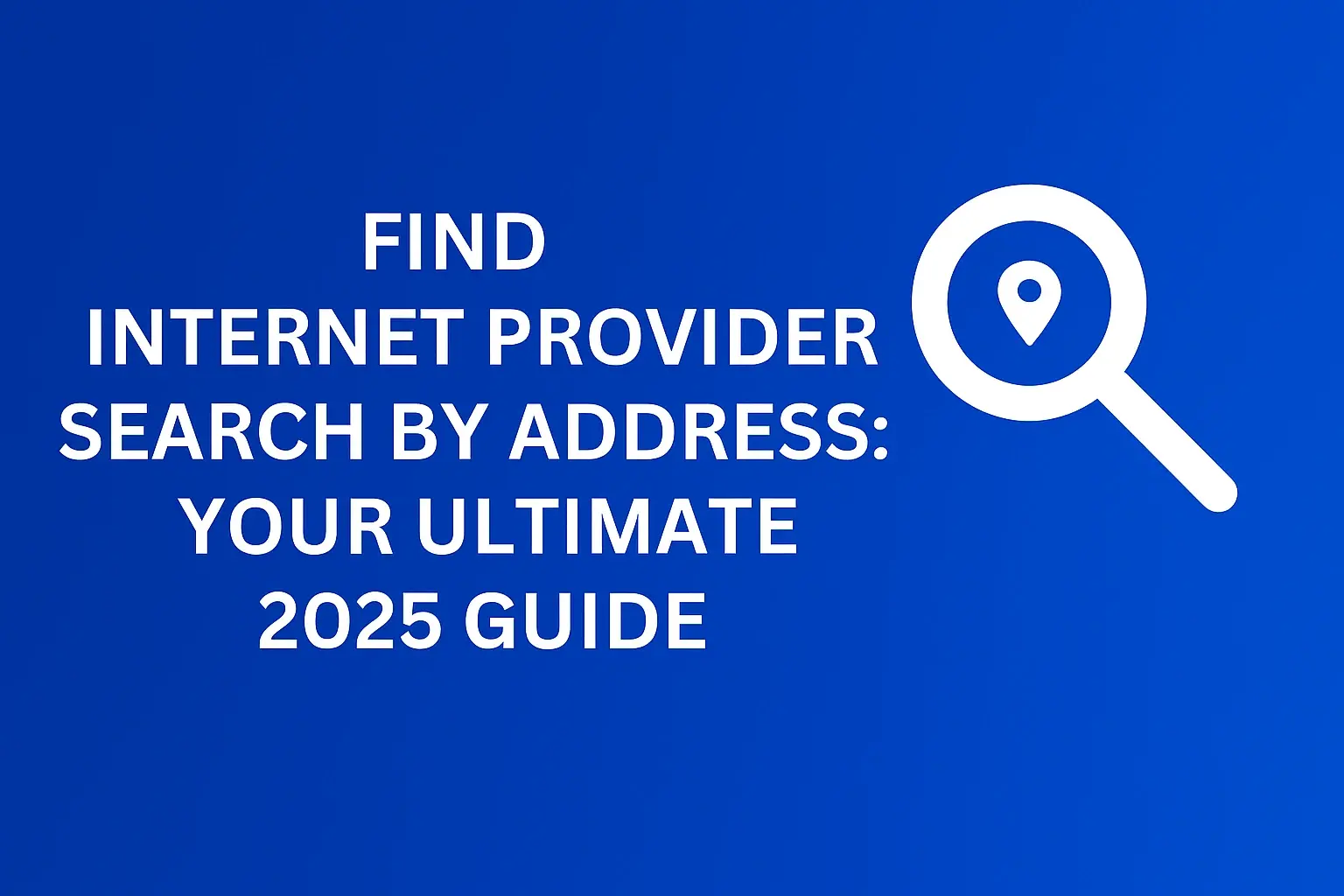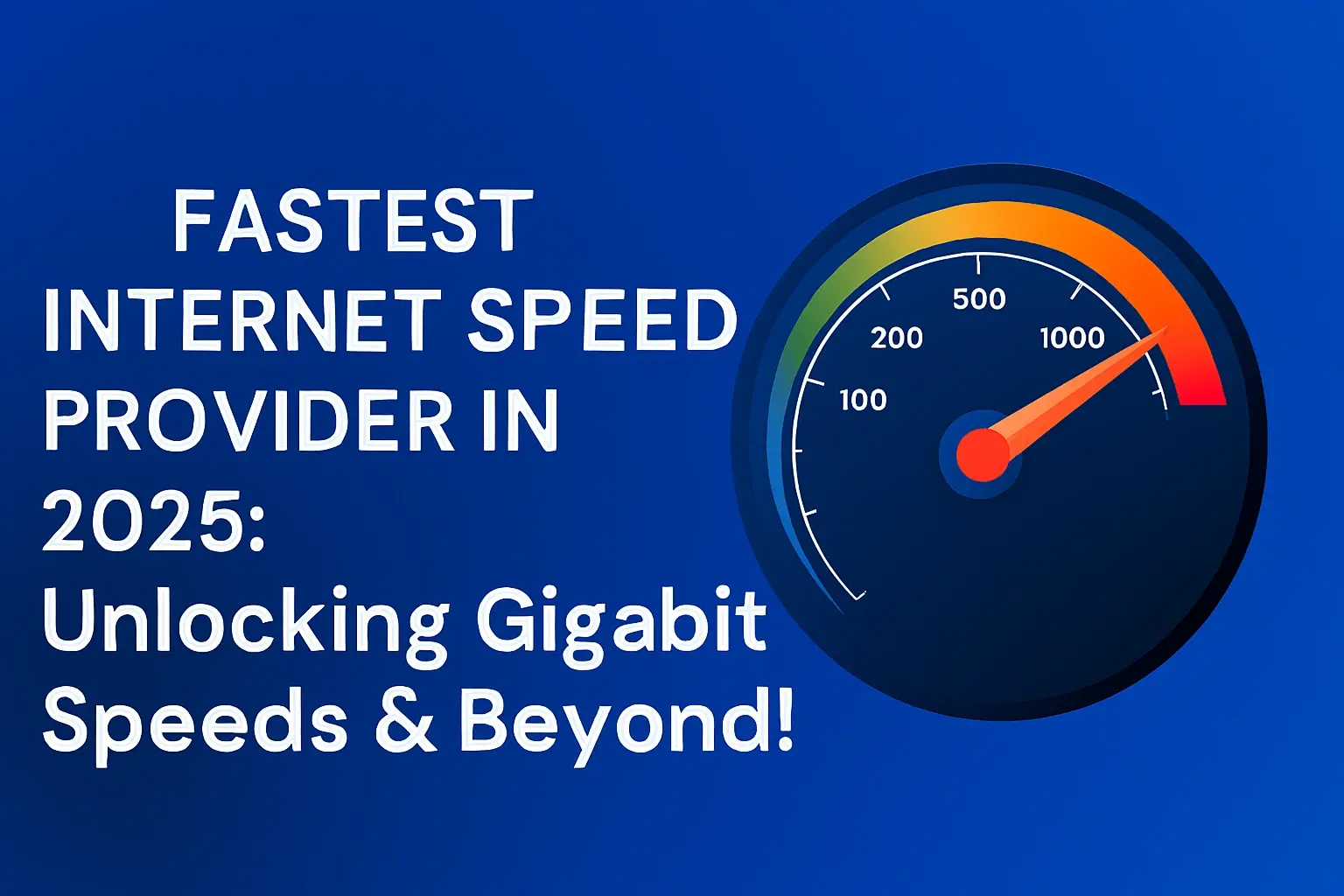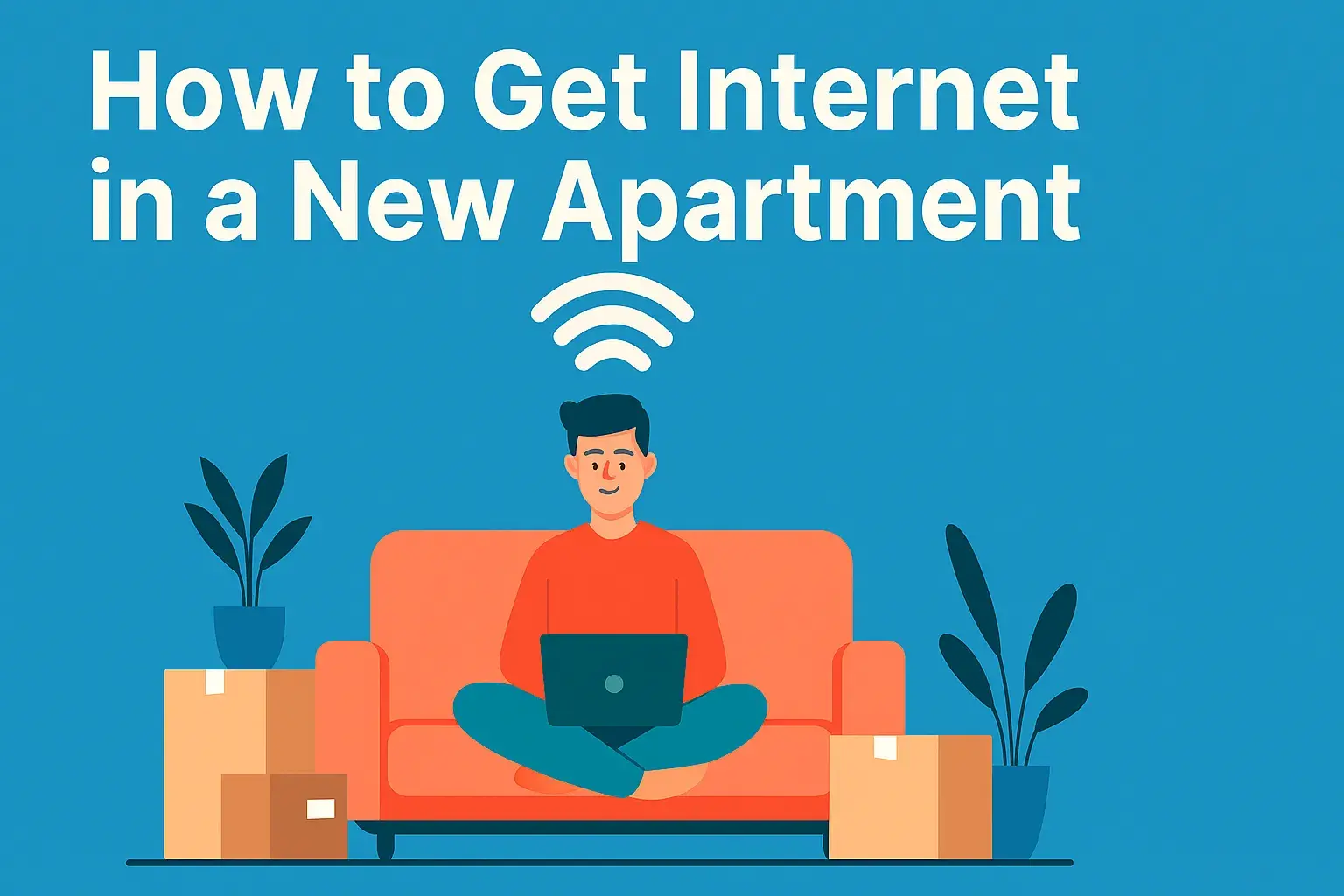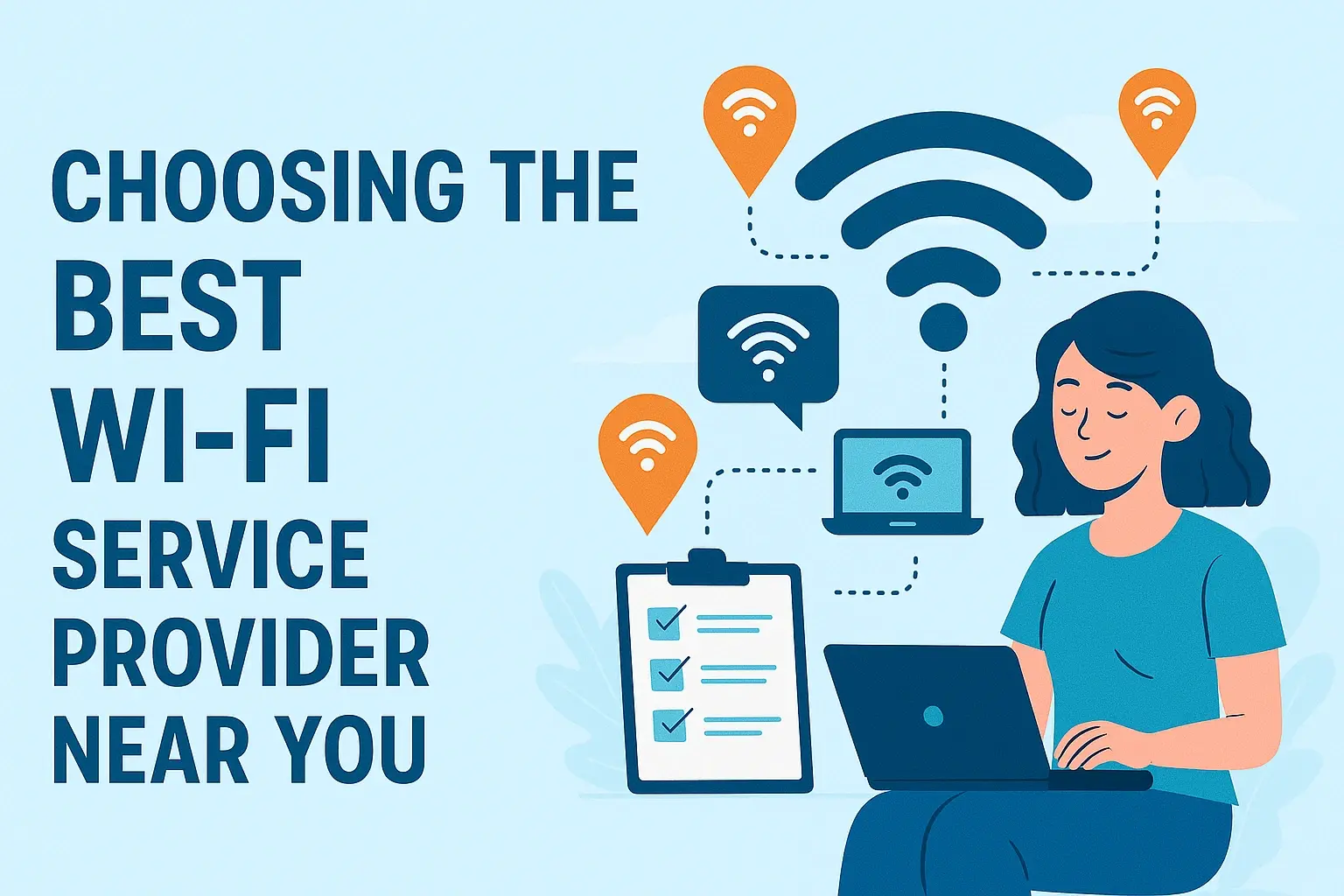In today's digital-first world, a reliable and fast internet connection is no longer a luxury – it's a necessity. Yet, many of us find ourselves stuck with outdated plans, sluggish speeds, or exorbitant bills simply because the idea of switching internet providers seems too daunting. But what if we told you that moving to a better ISP could be surprisingly straightforward? This in-depth guide for 2025 will demystify the process, empowering you to make an informed decision and enjoy a superior internet experience without the stress.
Why Consider Switching Internet Providers in 2025?
The internet landscape is constantly evolving, and staying with your current provider might mean missing out on significant advantages. Here are the compelling reasons why you should explore switching your internet service provider (ISP) this year:
- Better Speeds: Newer technologies like 5G home internet and advanced fiber optics offer speeds far exceeding traditional cable or DSL. If your current provider can't keep up, it's time to upgrade.
- Lower Costs: ISPs frequently offer introductory deals and promotions to attract new customers. Switching can often lead to substantial savings on your monthly bill, especially if you've been a long-term customer paying premium rates.
- Improved Reliability: Are you experiencing frequent outages or inconsistent performance? A different provider might offer a more stable network in your specific location.
- Bundling Options: Some providers offer attractive bundles including TV, phone, and internet services, which can simplify your bills and potentially reduce overall costs.
- Enhanced Customer Service: If you're frustrated with poor support from your current ISP, a competitor might offer a more responsive and helpful customer experience.
- Access to New Technologies: As technology advances, new options like fixed wireless or satellite internet become viable alternatives in areas previously underserved.
In 2025, the competition among ISPs is fiercer than ever, making it a prime time to leverage these advantages. Don't settle for less when a better connection is just a switch away.
Step 1: Research and Compare Providers in Your Area
This is the most crucial step. Your options depend entirely on your geographical location. What works for someone across town might not be available to you.
How to Find Available ISPs:
- Online Availability Checkers: Most major ISPs have tools on their websites where you can enter your address to see available plans. Use this for providers like Verizon Fios, Xfinity, Spectrum, AT&T Fiber, T-Mobile Home Internet, Starlink, and local providers.
- Third-Party Comparison Sites: Websites like BroadbandNow, HighSpeedInternet.com, or ConnectFast allow you to input your ZIP code and compare plans from multiple providers side-by-side. These often provide unbiased reviews and pricing details.
- Ask Your Neighbors: Word-of-mouth is invaluable. See what services your neighbors are using and what their experiences have been.
What to Look For When Comparing:
- Advertised Speeds (Download & Upload): Don't just look at download speed; upload speed is critical for video calls, uploading files, and gaming.
- Data Caps: Some plans have limits on how much data you can use per month. Exceeding these can result in throttling or extra charges.
- Pricing: Compare the monthly cost, including any introductory offers and the price after the promotional period ends.
- Equipment Fees: Will you need to rent a modem/router, and what is the monthly cost?
- Installation Fees: Some providers charge a one-time fee for professional installation.
- Contract Length: Are you locked into a contract, or is it month-to-month?
- Customer Reviews: Look for reviews regarding reliability, customer service, and actual speeds experienced by users.
Pro Tip for 2025: Many newer providers, especially those offering 5G home internet or fixed wireless, are expanding rapidly. Always check their availability even if you think they don't serve your area.
Step 2: Decode Internet Plans and Technologies
Understanding the different types of internet technology and plan structures will help you choose the best fit for your needs and budget.
Common Internet Technologies in 2025:
Fiber Optic: The gold standard, offering the fastest and most reliable speeds (up to 10 Gbps or more) with symmetrical upload/download speeds. Availability is growing but still limited.
Cable: Widely available, offering good download speeds (typically up to 1 Gbps). Upload speeds are usually much lower than download speeds.
DSL (Digital Subscriber Line): Uses existing phone lines. Speeds vary greatly depending on distance from the provider's hub, generally slower than cable or fiber.
5G Home Internet: Utilizes cellular 5G networks. Offers competitive speeds and often no data caps or contracts, making it a strong contender for many households. Availability is expanding rapidly.
Fixed Wireless: Uses radio signals from a tower to a receiver at your home. Good for rural areas where other options are limited, but speeds can be affected by weather and line-of-sight.
Satellite: Available almost anywhere, but typically comes with higher latency, lower speeds, and strict data caps. Best for extremely remote locations.
Understanding Plan Tiers:
- Basic/Starter Plans: Suitable for light internet use (email, social media, basic browsing). Speeds typically range from 25-100 Mbps download.
- Standard/Mid-Tier Plans: Good for families or moderate users (streaming HD video, online gaming, multiple devices). Speeds typically range from 100-500 Mbps download.
- High-Speed/Premium Plans: Ideal for heavy users, large households, or those needing fast uploads (4K streaming, large file transfers, professional remote work). Speeds typically range from 500 Mbps to 1 Gbps+ download.
Actionable Tip: Most households can get by with a 100-300 Mbps plan in 2025, but if you have multiple users streaming 4K content simultaneously or work from home with large file uploads, aim for 500 Mbps or higher, especially if fiber is available.
Step 3: Understand Contracts and Hidden Fees
This is where many consumers get caught out. Thoroughly understanding the terms and conditions can save you significant money and frustration.
Key Contractual Elements to Scrutinize:
- Contract Length: Many providers offer lower introductory rates for a fixed term (e.g., 12, 24, or 36 months). Know when this period ends, as prices often jump significantly afterward.
- Early Termination Fees (ETFs): If you need to break a contract early, ETFs can be substantial. Calculate if the savings from switching outweigh the potential ETF.
- Price Increases: Be aware of how often prices might increase and by how much. Some contracts have clauses allowing for annual price hikes.
- Data Caps: As mentioned, exceeding data limits can incur hefty overage charges. Ensure the plan's cap meets your household's usage.
- Promotional vs. Standard Pricing: Always ask for the "regular" price after the promotional period ends. Many competitors will match or beat these standard rates.
Common Hidden Fees to Watch For:
- Activation/Setup Fees: A one-time charge to get your service started.
- Equipment Rental Fees: Monthly charges for modems, routers, or other proprietary hardware. Buying your own compatible equipment can save money long-term.
- Installation Fees: For professional installation, especially if special wiring is required.
- Taxes and Surcharges: These can add a surprising percentage to your monthly bill.
2025 Insight: The trend towards no-contract plans, especially with 5G home internet and some fiber providers, is growing. If flexibility is key, prioritize these options.
Step 4: Strategize Your Switch Timing
Timing is everything when switching ISPs to minimize disruption and avoid unnecessary costs.
When is the Best Time to Switch?
- End of Contract: The most logical time. You avoid early termination fees and can leverage new customer offers.
- Moving Homes: If you're moving to a new area, it's the perfect opportunity to research and sign up for the best available service at your new address.
- Significant Price Increase: If your current provider hikes your rates significantly, especially after a promotional period ends, it's a strong signal to start looking elsewhere.
- Poor Performance: If your internet service has become consistently unreliable or slow, don't wait for your contract to end. Start the switch process immediately.
How to Minimize Service Interruption:
- Schedule Installation Before Cancellation: The ideal scenario is to have your new internet service fully installed and working before you cancel your old service. This ensures you have continuous connectivity.
- Coordinate Installation Dates: When you order your new service, ask about installation timelines. Aim for a date that allows a buffer before your old service is scheduled to be disconnected.
- Understand Your Billing Cycles: Be aware of when your current provider's billing cycle ends. Canceling just before a new cycle begins can prevent you from being charged for an extra month.
Smart Move: If possible, schedule your new installation for a weekday morning. This often provides more flexibility for troubleshooting if any issues arise.
Step 5: Place Your Order with the New Provider
Once you've chosen your new ISP and plan, it's time to make the switch official.
The Ordering Process:
- Online: Most providers allow you to sign up directly through their website. Have your address, contact information, and payment details ready.
- Phone: You can call the provider's sales department. Be prepared for potential upsells.
- In-Store: Some providers have physical retail locations where you can sign up.
Information You'll Need:
- Full Name
- Service Address
- Contact Phone Number and Email Address
- Payment Method (Credit/Debit Card, Bank Account)
- Social Security Number (sometimes required for credit checks, especially for new customers)
Important Note: During the order process, confirm all fees, contract terms, and the installation date. Get a confirmation number and keep a record of the conversation (date, time, representative's name).
Step 6: Schedule Installation and Equipment Setup
This is where your new internet connection comes to life. Proper setup ensures optimal performance.
Professional Installation vs. Self-Installation:
- Professional Installation: Recommended for fiber optic or if you're unsure about wiring. A technician will run cables, set up the modem/router, and test the connection.
- Self-Installation: Often available for cable or DSL. The provider sends you a kit with a modem/router and instructions. This is usually quicker and cheaper if you're comfortable with basic setup.
What to Expect During Installation:
- Technician Arrival: They will typically call when they are on their way. Ensure someone over 18 is present.
- Equipment Placement: Discuss the best location for your modem and router to ensure good Wi-Fi coverage throughout your home.
- Wiring: New cables might be run from the outside demarcation point to your chosen equipment location.
- Testing: The technician will test the connection speed and stability.
Setting Up Your Own Equipment (if applicable):
- Unpack the modem and router.
- Connect the modem to the wall outlet (coaxial cable for cable, phone jack for DSL, Ethernet for fiber).
- Connect the router to the modem using an Ethernet cable.
- Plug in the power adapters for both devices.
- Follow the provider's instructions to activate the service, often via a web portal or app.
2025 Tip: Many providers now offer app-based setup guides for self-installation, making the process even easier. If you're buying your own modem/router, ensure it's compatible with the provider's network.
Step 7: Disconnect Your Old Service
This step requires careful coordination to avoid losing internet access unexpectedly or paying for service you're no longer using.
When to Cancel:
Ideally, schedule your new service installation and activation to occur before you cancel your old service. This ensures you have a seamless transition.
How to Cancel:
- Call Customer Service: This is usually the required method. Be prepared for retention offers.
- Follow Provider's Procedure: Some providers may have specific forms or online portals for cancellation requests.
- Be Clear and Concise: State your intention to cancel and ask for confirmation of the disconnection date and any final charges.
Returning Equipment:
Most ISPs require you to return their rented equipment (modem, router, set-top boxes) to avoid hefty unreturned equipment fees. You'll typically be given a shipping label or told to drop it off at a designated location.
Important: Do NOT cancel your old service until your new service is fully installed and confirmed to be working. This is the most common mistake people make, leading to extended periods without internet.
Step 8: Troubleshooting Common Switch Issues
Even with careful planning, minor hiccups can occur. Here’s how to address them.
No Internet After Installation:
- Check Connections: Ensure all cables are securely plugged into the modem, router, and wall outlet.
- Reboot Equipment: Unplug the modem and router, wait 30 seconds, then plug them back in.
- Verify Activation: Confirm with your new provider that your service has been fully activated.
- Check Wi-Fi Settings: Ensure your devices are connected to the correct Wi-Fi network and password.
Slow Speeds:
- Run a Speed Test: Use sites like Speedtest.net or Fast.com. Compare results to your advertised speeds.
- Test Wired vs. Wireless: Connect a computer directly to the router via Ethernet cable. If speeds are good wired but slow wirelessly, the issue might be with your Wi-Fi setup or router.
- Check for Interference: Other electronic devices can interfere with Wi-Fi signals.
- Contact Provider: If speeds are consistently low, contact your new ISP's technical support.
Billing Discrepancies:
- Review Your First Bill Carefully: Check for unexpected charges or fees.
- Contact Billing Department: If you find errors, reach out to the billing department immediately to dispute charges.
Proactive Approach: Keep all documentation from your new provider (order confirmation, contract, installation receipt) handy. This will be invaluable if you need to resolve any issues.
Internet Provider Comparison: Key Factors to Consider (2025)
| Feature | Fiber Optic | Cable | 5G Home Internet | DSL | Satellite |
|---|---|---|---|---|---|
| Typical Speeds (Download) | 100 Mbps - 10 Gbps+ | 50 Mbps - 1 Gbps | 100 Mbps - 300 Mbps (variable) | 1 Mbps - 100 Mbps | 25 Mbps - 100 Mbps |
| Typical Speeds (Upload) | Symmetrical (same as download) | 10 Mbps - 50 Mbps | 20 Mbps - 60 Mbps (variable) | 0.5 Mbps - 10 Mbps | 3 Mbps - 20 Mbps |
| Reliability | Excellent | Very Good | Good (can be affected by network congestion) | Fair (affected by distance) | Fair (affected by weather) |
| Data Caps | Rarely | Sometimes | Rarely | Rarely | Common (often strict) |
| Latency | Very Low | Low | Low to Moderate | Moderate | High |
| Availability | Growing, but limited | Widespread | Expanding rapidly in urban/suburban areas | Widespread (uses phone lines) | Near-universal |
| Best For | Heavy users, gamers, large households, future-proofing | General use, streaming, families | Cost-conscious, renters, those seeking no-contract options | Light users, budget-conscious, areas with no other options | Remote locations with no other broadband options |
Note: Speeds and availability vary significantly by provider and location. Always check specific offerings for your address.
Your Seamless Internet Switch Awaits
Switching internet providers in 2025 is more accessible and beneficial than ever before. By following these structured steps—from thorough research and understanding plan details to strategic timing and careful cancellation—you can navigate the process with confidence and ease. Remember to prioritize your specific needs, whether that's blazing-fast fiber speeds for a demanding household, reliable 5G home internet with no contract, or a cost-effective DSL plan for lighter usage. Always scrutinize contract terms, be aware of potential fees, and most importantly, ensure your new service is fully operational before disconnecting your old one. This proactive approach minimizes disruption and guarantees a smooth transition. Embrace the opportunity to upgrade your connectivity, potentially save money, and enjoy a more reliable internet experience tailored to your lifestyle. Your journey to a better internet connection starts now!






